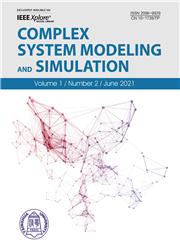Estimation-Correction Modeling and Chaos Control of Fractional-Order Memristor Load Buck-Boost Converter
引用次数: 0
Abstract
A fractional-order memristor load Buck-Boost converter causes periodic system oscillation, electromagnetic noise, and other phenomena due to the frequent switching of the switch in actual operation, which is detrimental to the stable operation of the power electronic converter. It is of great significance to the study of the modeling method and chaos control strategy to suppress the nonlinear behavior of the Buck-Boost converter and expand the safe and stable operation range of the power system. An estimation-correction modeling method based on a fractional active voltage-controlled memristor load peak current Buck-Boost converter is proposed. The discrete numerical solution of the state variables in the continuous mode of the inductor current is derived. The bursting oscillation phenomenon when the system introduces external excitation is analyzed. Using bifurcation, Lyapunov exponent, and phase diagrams, a large number of numerical simulations are performed. The results show that the Buck-Boost converter is chaotic for certain selected parameters, which is the prerequisite for the introduction of the controller. Based on the idea of parameter perturbation and state association, a three-dimensional hybrid control strategy for a fractional memristor Buck-Boost converter is designed. The effectiveness of the control strategy is verified by simulations, and it is confirmed that the system is controlled in a stable periodic state when the external tunable parameter分数阶晶闸管负载降压-升压转换器的估计-校正建模和混沌控制
分数阶忆阻器负载Buck-Boost变换器在实际运行中由于开关频繁切换,会引起周期性系统振荡、电磁噪声等现象,不利于电力电子变换器的稳定运行。研究抑制降压-升压转换器非线性行为的建模方法和混沌控制策略,扩大电力系统的安全稳定运行范围具有重要意义。本文提出了一种基于分数有源电压控制忆阻器负载峰值电流降压-升压变流器的估计-校正建模方法。得出了电感器电流连续模式下状态变量的离散数值解。分析了系统引入外部激励时的突发振荡现象。利用分岔、Lyapunov 指数和相图进行了大量数值模拟。结果表明,降压-升压转换器在某些选定参数下是混沌的,这是引入控制器的先决条件。基于参数扰动和状态关联的思想,设计了分数忆阻器降压-升压转换器的三维混合控制策略。通过仿真验证了控制策略的有效性,并证实当代表系统中状态变量之间耦合强度的外部可调参数 $s$ 在 [-0.4, 0] 范围内逐渐减小时,系统被控制在稳定的周期状态。与整数阶受控系统相比,分数阶受控系统的稳定工作范围更大。
本文章由计算机程序翻译,如有差异,请以英文原文为准。
求助全文
约1分钟内获得全文
求助全文

 求助内容:
求助内容: 应助结果提醒方式:
应助结果提醒方式:


